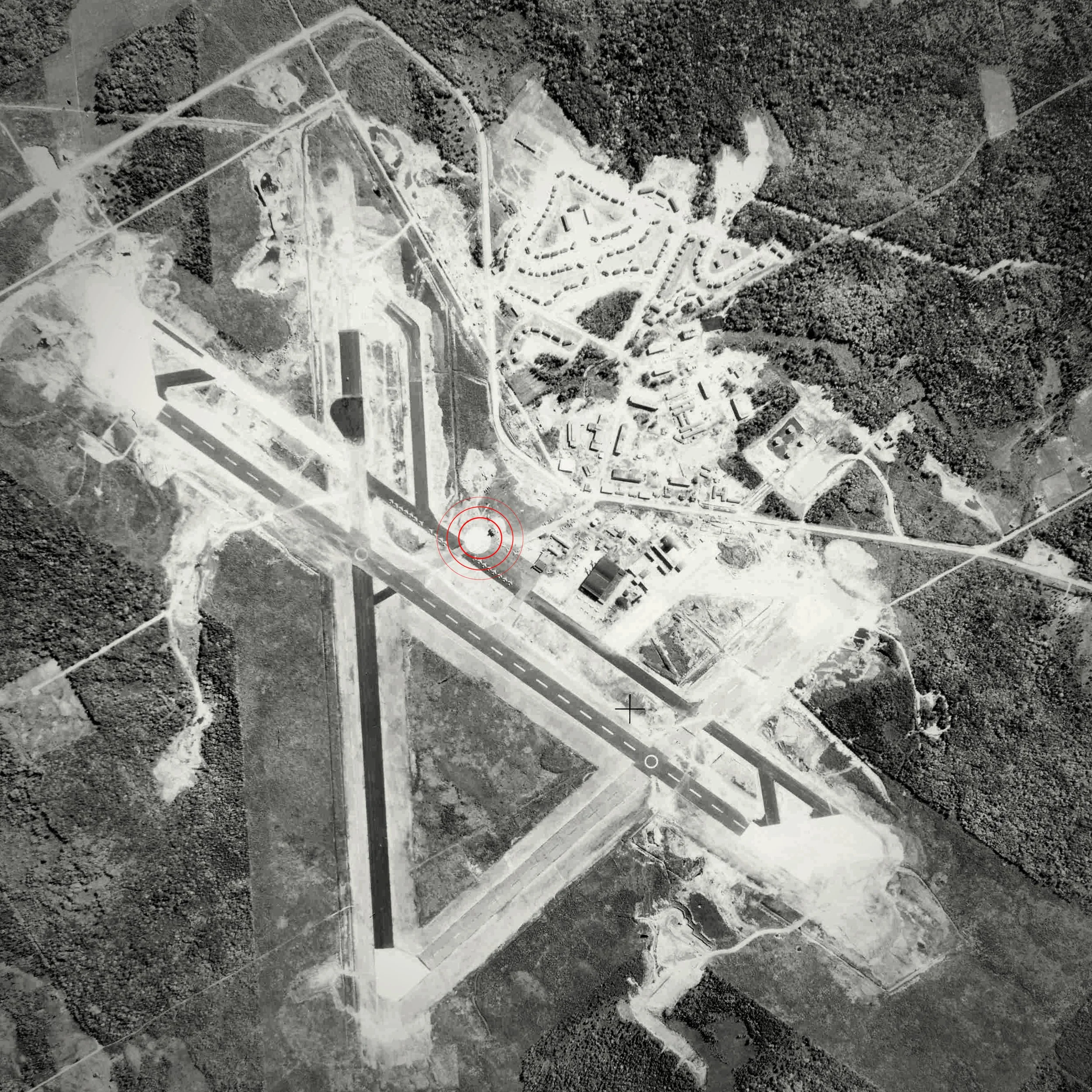RCAF Base Established at The North Bay Airport (1950s)
In October 1950, Nipissing’s Member of Parliament, J.R. (Jack) Garland announced that a $6,000,000 RCAF air base would be established at the North Bay airport. The air defence base was developed as a site to respond to a potential Soviet air attack on North America due to Cold War tensions.
Construction of the air base began in 1951, and by 1954 North Bay’s entire airfield was revamped. Among the additions were newly constructed hangars, fuel depots and a control tower with the return of air traffic control. The lengthening of the runway to 10,000ft (among the longest runways in Canada) enabled the airfield to receive aircraft of any kind and size from anywhere in the world. Because of this feature, NASA selected North Bay as an emergency landing site for the Space Shuttle.
Five fighter squadrons (430 Squadron, 445 Squadron, 419 Squadron, 433 Squadron, and 414 Squadron) served at North Bay between 1951 and 1964 flying such aircraft as Sabre Fighters, CF-100 Canucks and the supersonic CF-101 Voodoo interceptors. 445 Squadron was the first unit in the world to be armed with the Avro CF-100 Canuck interceptor. The CF-100 was the only warplane designed and built entirely in Canada, and was the only Canadian-designed fighter jet to enter mass production.
In 1964, the fighter squadrons left North Bay and until 1972, the base had no flying units. In 1972, the 414 (Electronic Warfare) Squadron was posted in North Bay where it remained until 1992. The base, renamed 22 Wing in 1993, became the only air base in Canada without airplanes or an airfield.
In 1951, the RCAF announced that the base at North Bay would be the home of the new CF-100 Canuck jet.
On July 22, 1952, the first CF-100 Canuck was delivered to RCAF Station North Bay. The last flight of a CF-100 in Canada took place on February 10, 1982 in North Bay.
Doug Newman, 22 Wing Heritage Officer
An aerial view of the airfield in 1952. The North Bay Airport terminal is circled in the centre of the photo.
RCAF buildings at various stages of construction, including family housing, an elementary school, barracks, a mess hall, hospital, and more, can be seen above Airport Road. The hangar built by the Royal Air Force during the Second World War for the Trans-Atlantic flying school is the large, dark building to the right of the terminal. In this photo, the hangar is occupied by the RCAF. Today, it is used by Voyageur Airways.
North Bay Museum, Hicks Collection
A closer view of the runways and airport facilities with the City of North Bay and Lake Nipissing in the background.
Several CF-100 fighter jets can be seen lined up on the right. Photo is circa 1953.
North Bay Museum Collection
A lineup of RCAF 430 Fighter Squadron Sabres at RCAF Station North Bay, 1952.
Doug Newman, 22 Wing Heritage Officer




